Analyzing the Sustainability of a Coastal Spanish City
While studying abroad in Granada, Spain, I enrolled in a class at the University of Granada focused on the sustainable planning and management of urban spaces.
For my final project, I conducted a case study on the coastal city of Fuengirola. The following slides are from my final presentation in that class.
It was an exciting challenge to conduct research relying entirely on Spanish sources. It was also exciting (but very nerve-wracking!) to present my findings to a room full of local university students at the end of the semester.
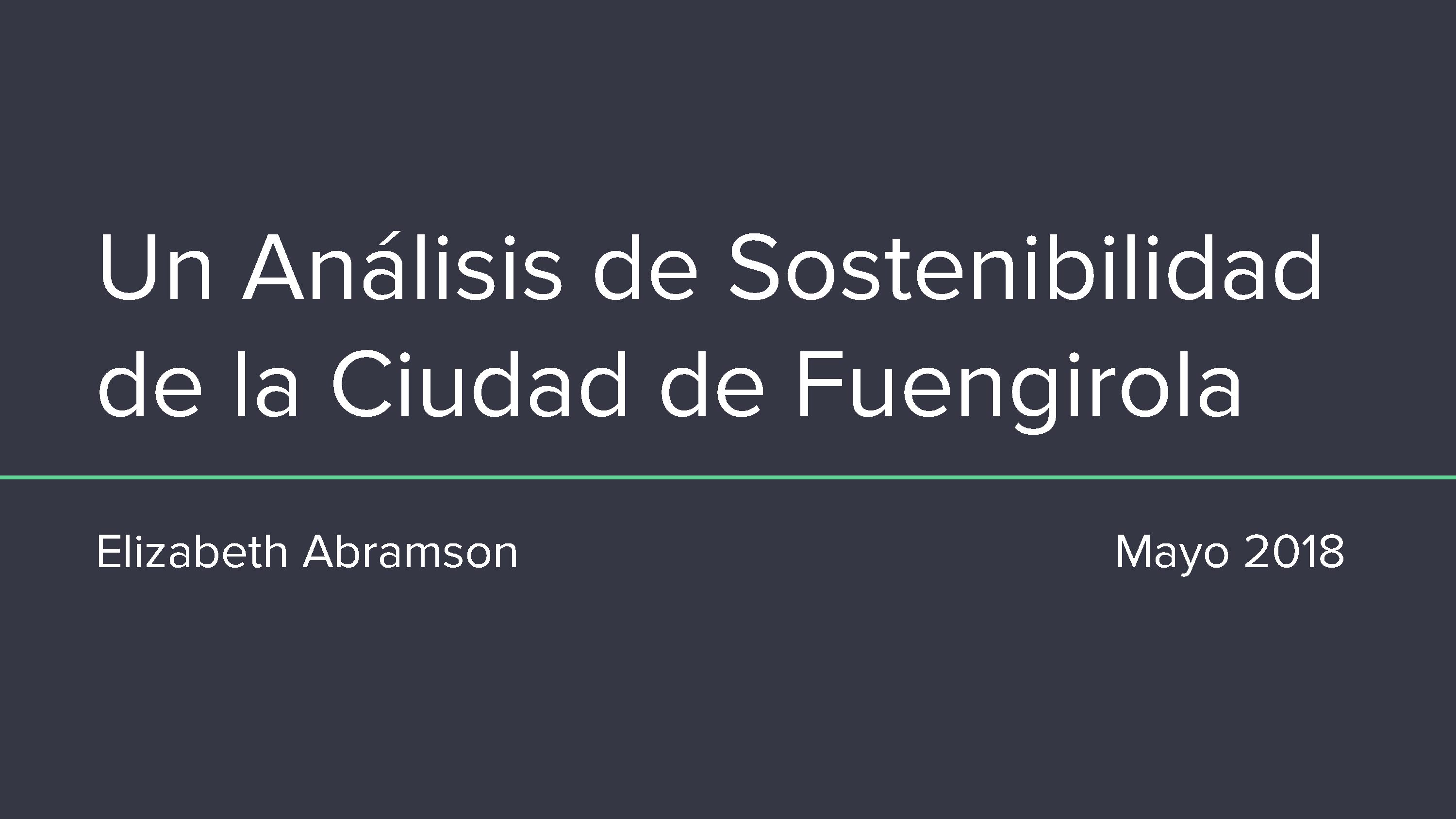
A Sustainability Analysis of the City of Fuengirola
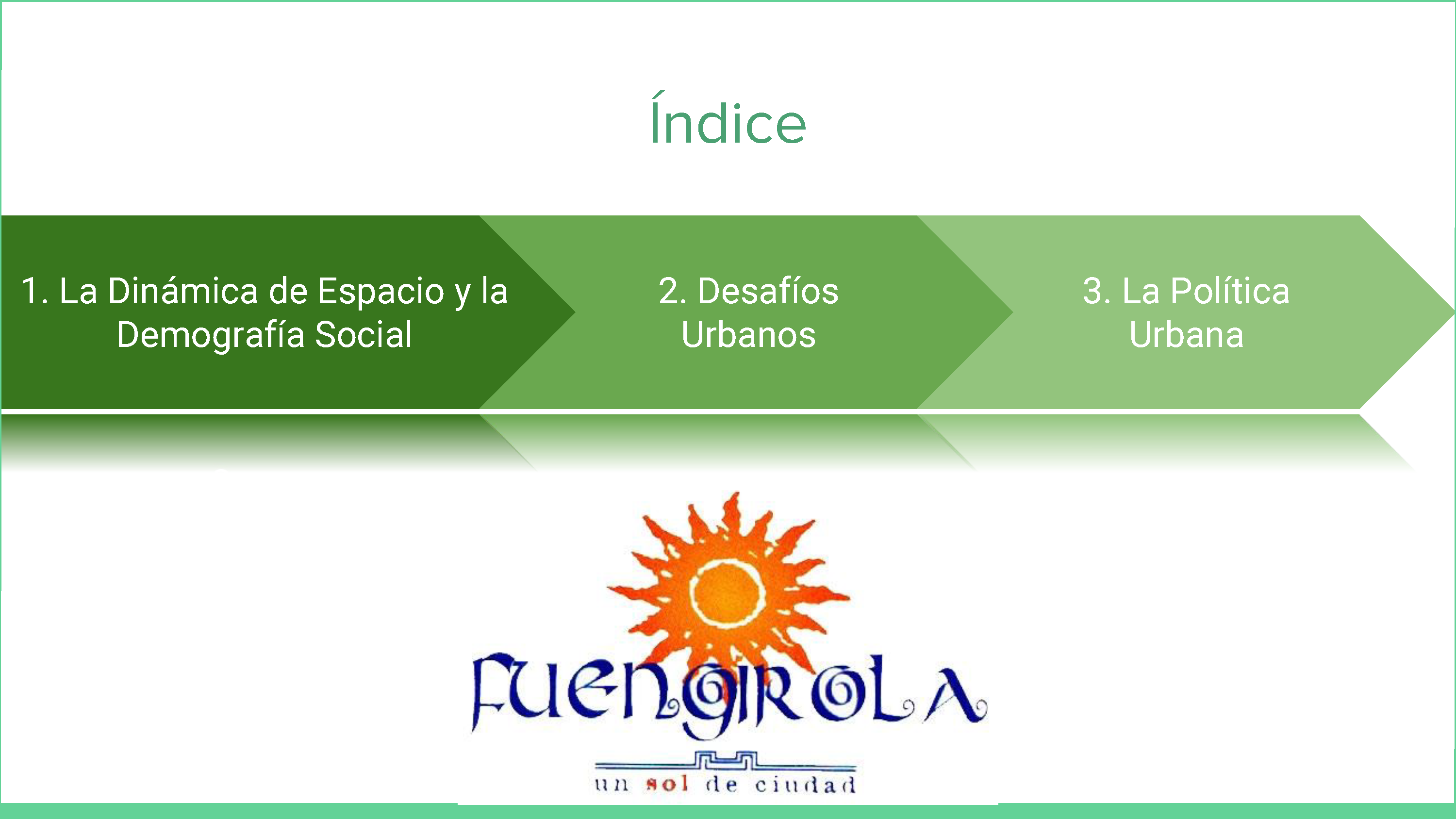
Contents
- Spatial Dynamics and Social Demographics
- Urban Challenges
- Urban Politics
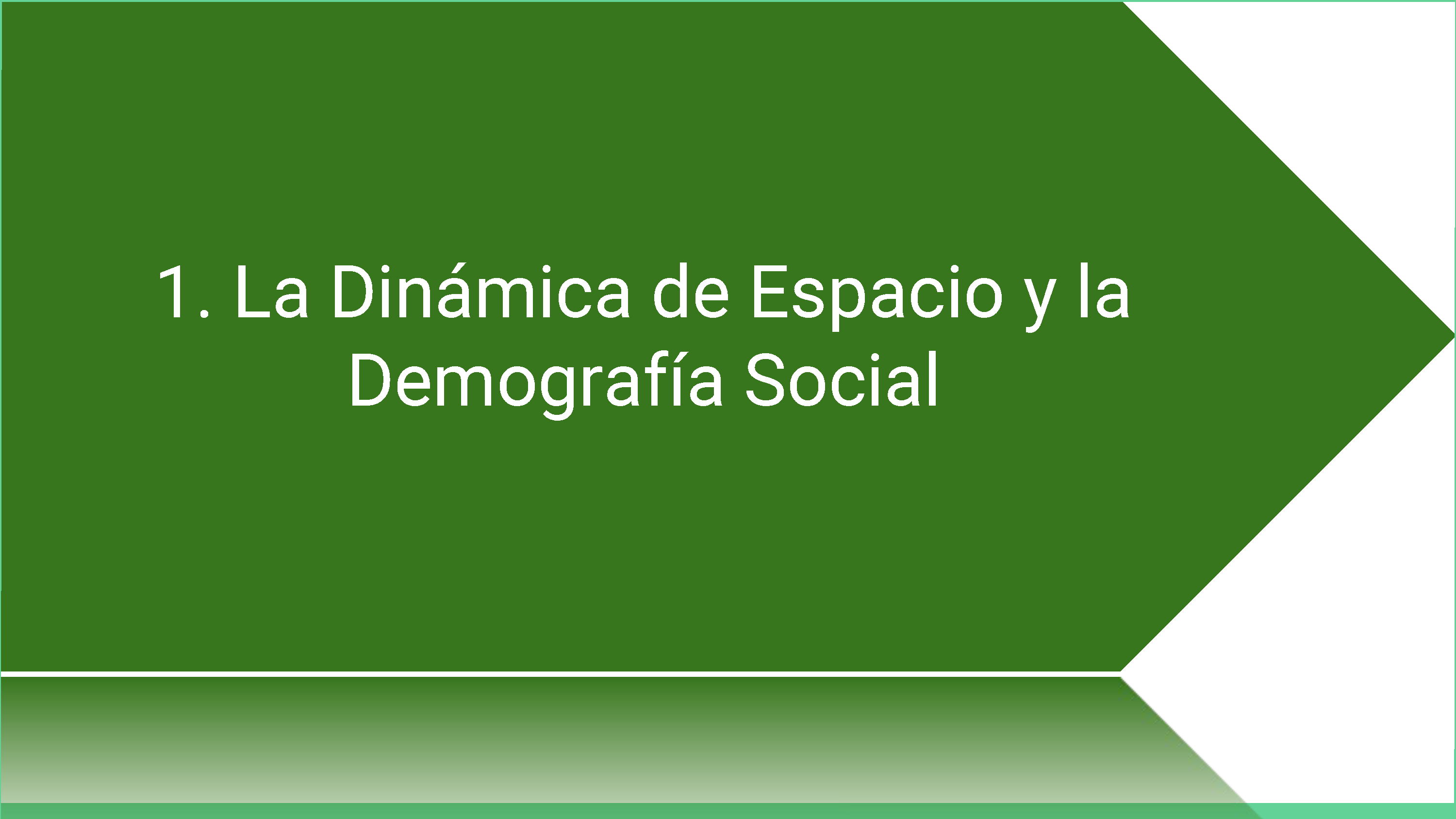
Spatial Dynamics and Social Demographics
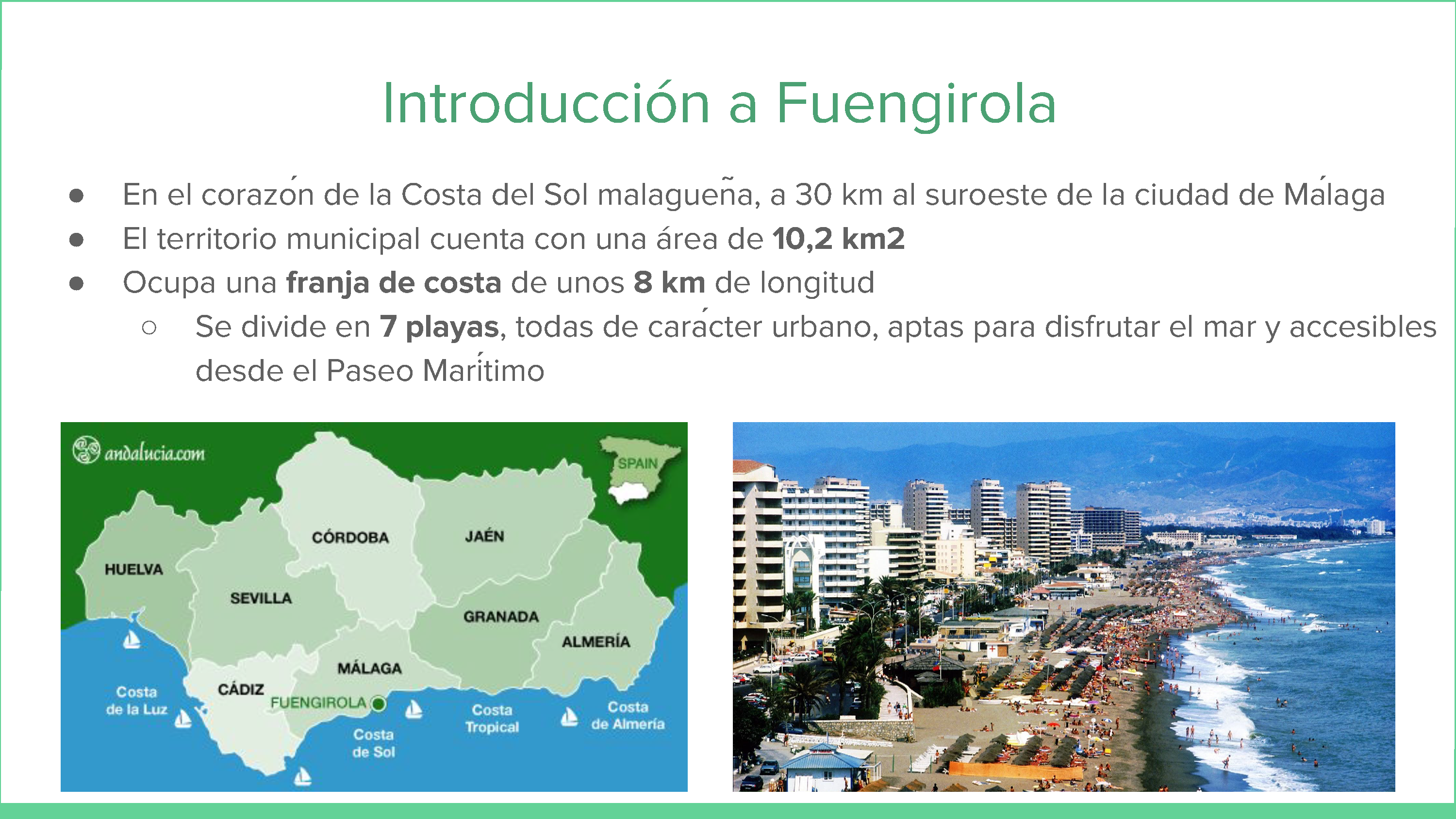
Introduction to Fuengirola
Fuengirola is located in the heart of the Costa del Sol in the province of Málaga, along the shore of the Mediterranean Sea. The city spans 10.2 square kilometers and occupies a narrow 8 kilometer strip of the coast. This coastal area is divided into seven urban beaches, all suitable for swimming and accessible from the boardwalk.
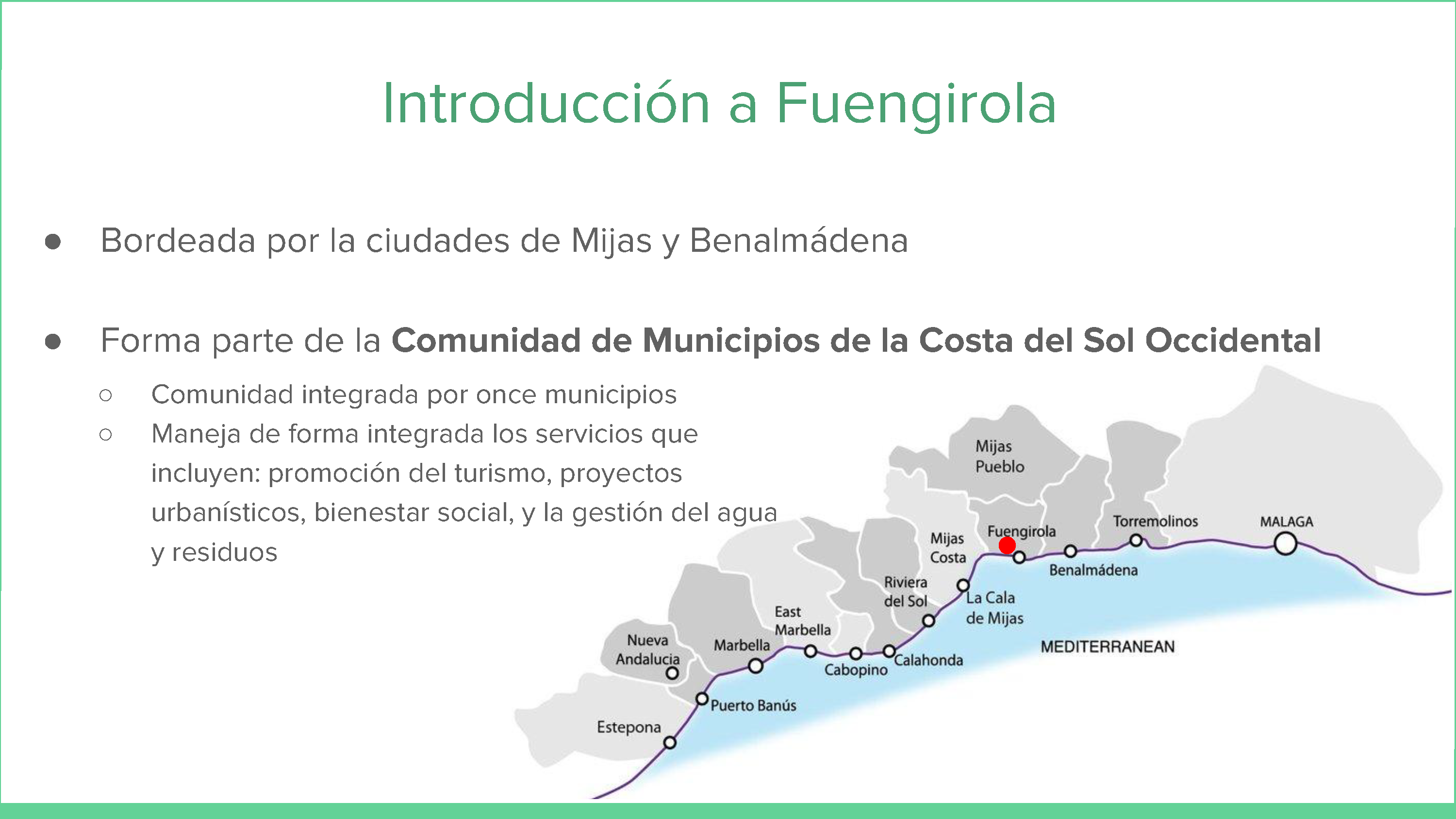
Introduction to Fuengirola (cont.)
Fuengirola is bordered by the cities of Mijas and Benalmádena, and forms part of the Association of Cities of the Western Costa del Sol. This institution is comprised of eleven cities that jointly manage services including the promotion of tourism, urban planning and social welfare projects, and the management of water and waste.

Growth of the Tourism Sector
Along with several other cities along the Costa Del Sol, Fuengirola’s appeal as a tourist destination began growing in the 1950s.
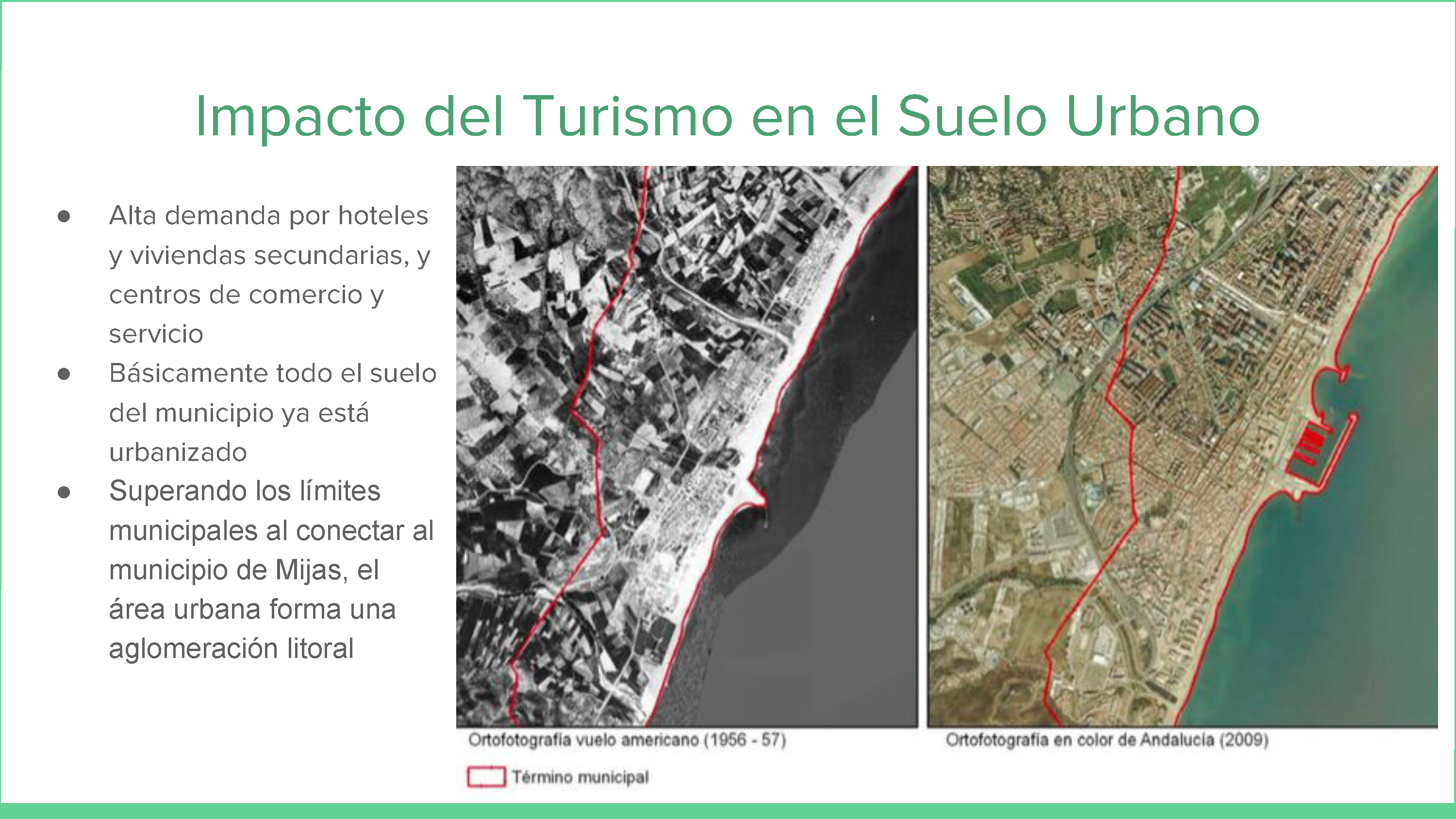
Impact of Tourism on Urban Land
As Fuengirola’s tourist appeal has grown, the city has seen increased demand for housing, lodging, and commercial services. As a result, basically all of the land in the city is now fully urbanized. The city’s urban growth has led to the formation of a coastal urban agglomeration that extends past official city boundaries, connecting Fuengirola to the city of Mijas.

Growth of Population and Density
Today, Fuengirola has a population of nearly 75,000 residents and a population density of roughly 7,000 people per square kilometer. This density rate, exceptionally high compared with neighboring cities, is the result of rapid population growth coupled with lax planning that has allowed for dense housing construction. As a tourist destination, Fuengirola also experiences a seasonal population influx, with nearly 200,000 visitors inhabiting the city during the summer. This population influx complicates city planning and management.
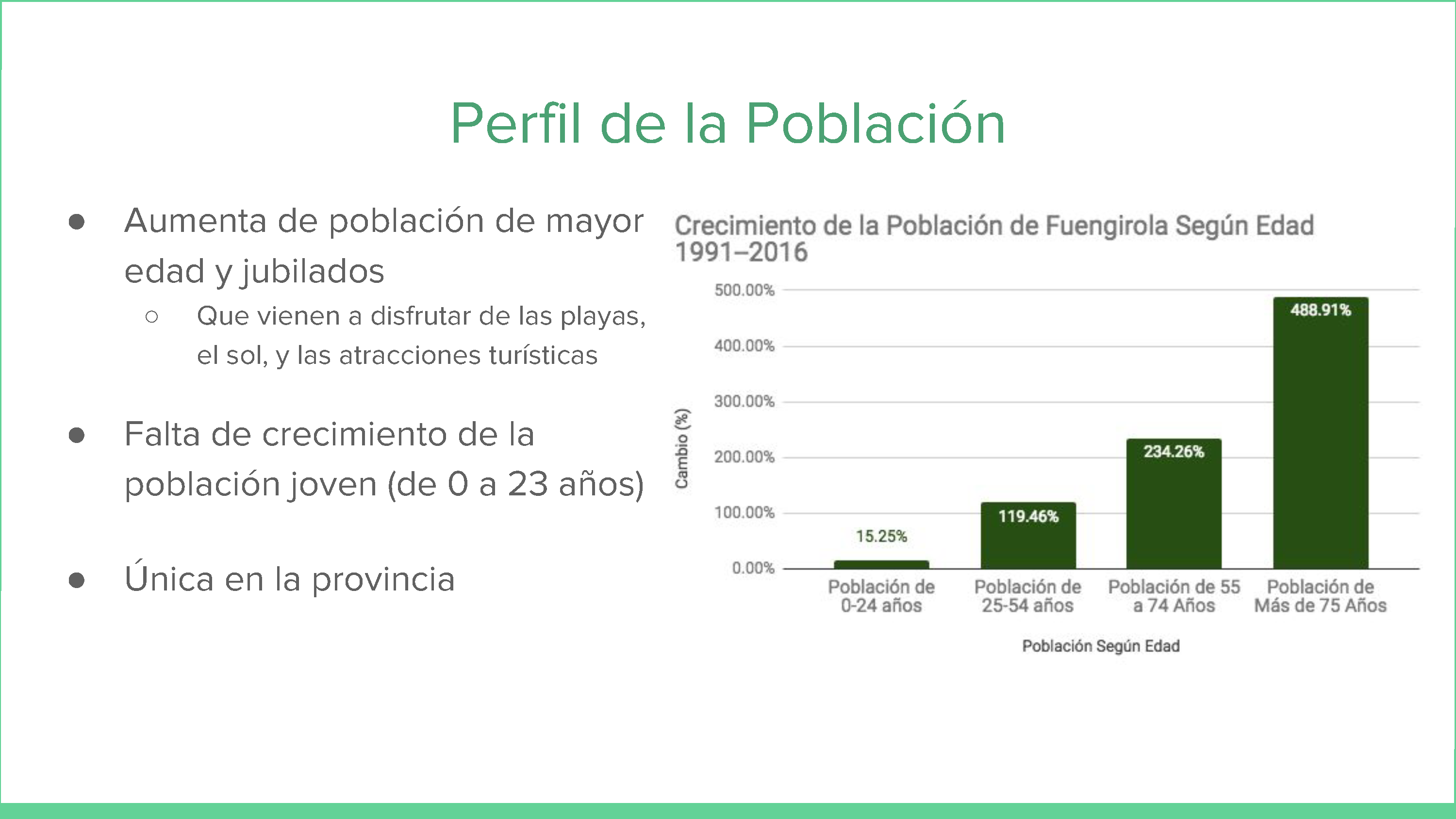
Population Profile
Unlike the province of Málaga as a whole, Fuengirola has experienced a consistent increase in the median age of its residents. This can be attributed largely to the growing number of retired and aging people who have moved to Fuengirola to enjoy its beaches, sun, and tourist attractions.
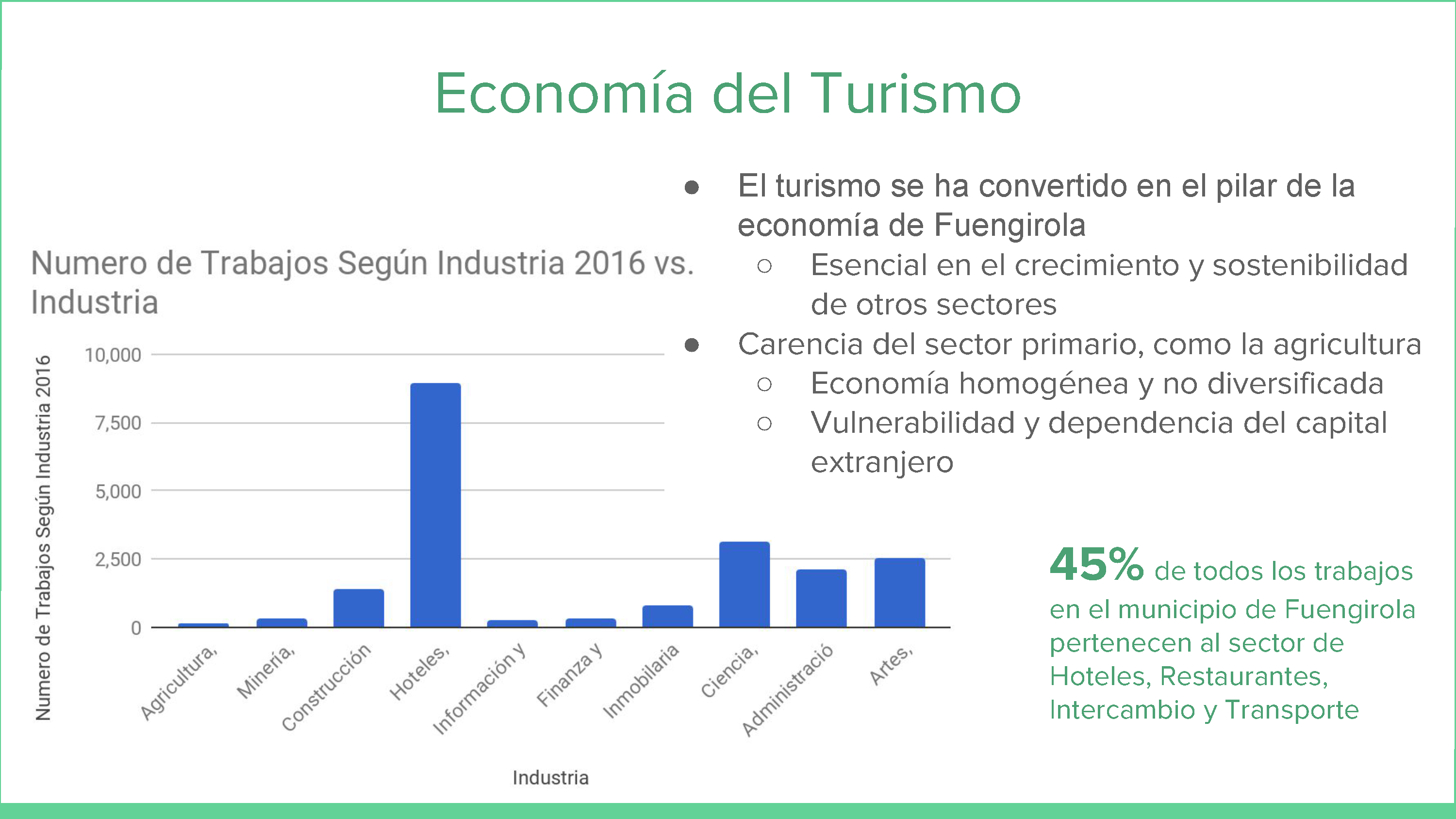
Tourist Economy
Tourism has increasingly become the central pillar of Fuengirola’s economy. While economic activities related to hospitality, entertainment, and real estate have grown, primary sectors such as agriculture and industry have declined. Fuengirola’s increasing dependence on foreign capital and seasonal tourism present potential risks for the city.
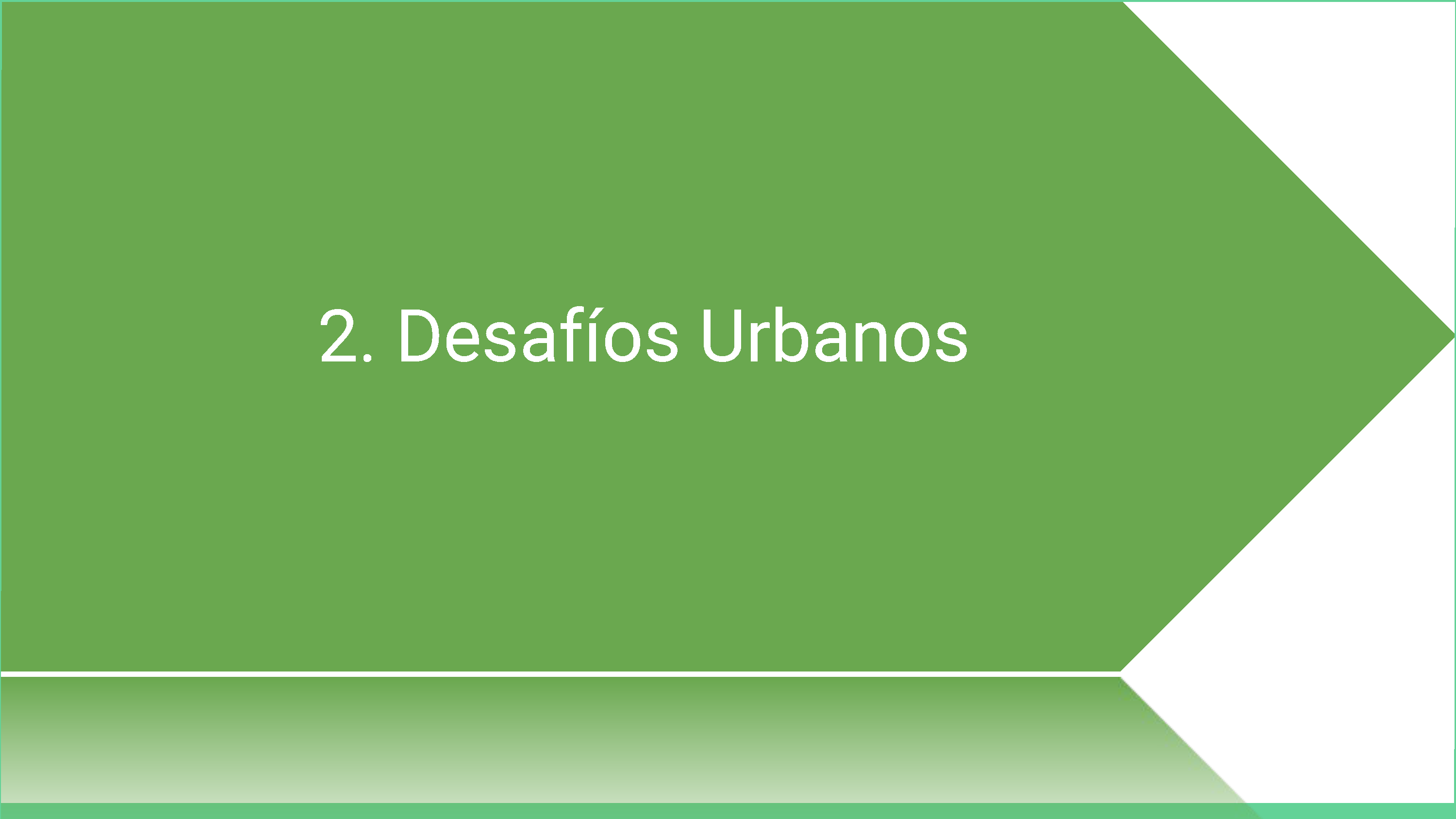
Urban Challenges
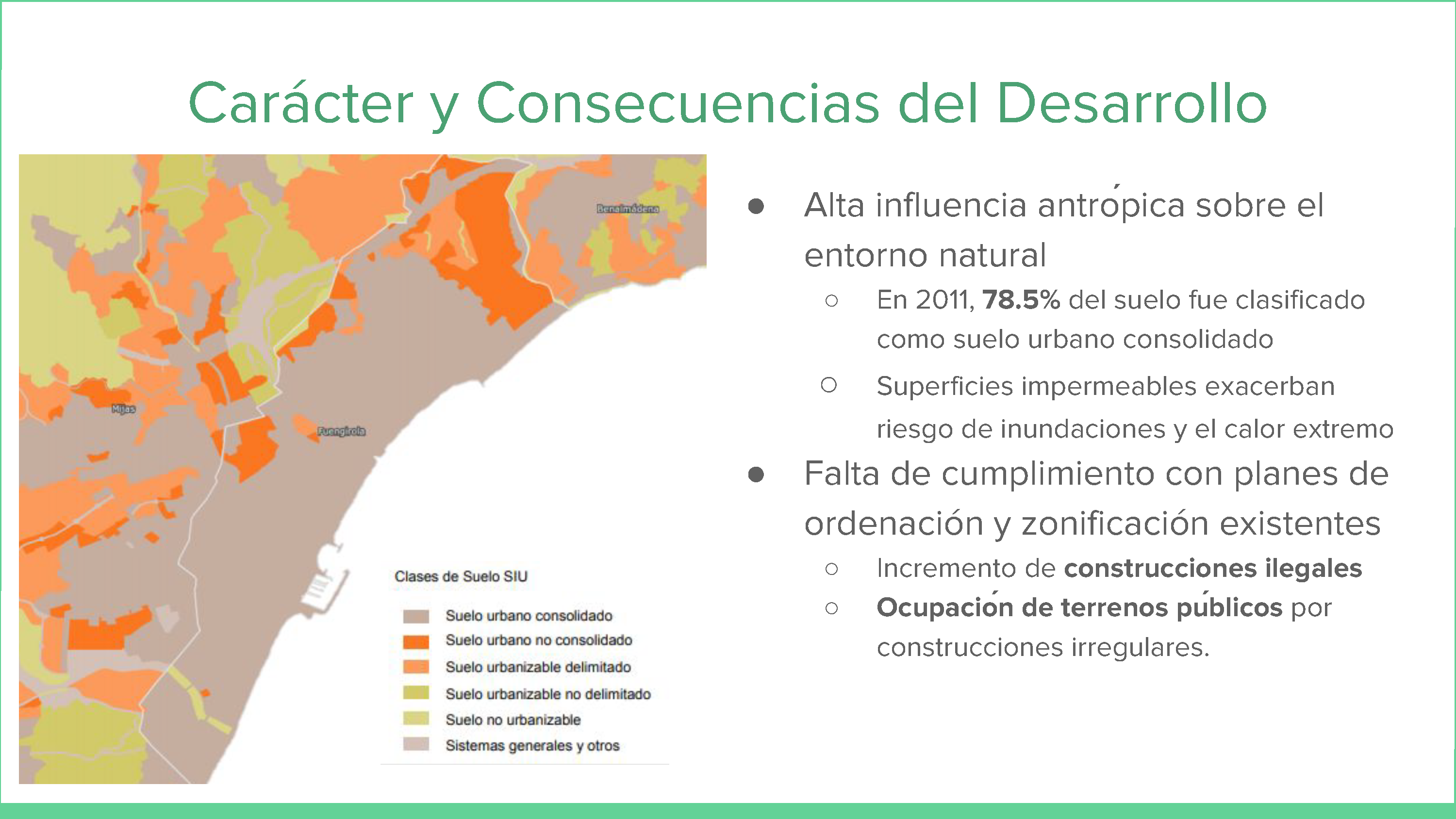
Character and Consequences of Development
The nearly complete urbanization of land in Fuengirola has made impermeable surfaces ubiquitous throughout the city, increasing local flood risk and extreme heat. In addition, the city’s urban growth has been characterized by the proliferation of non-conforming and irregular land uses.
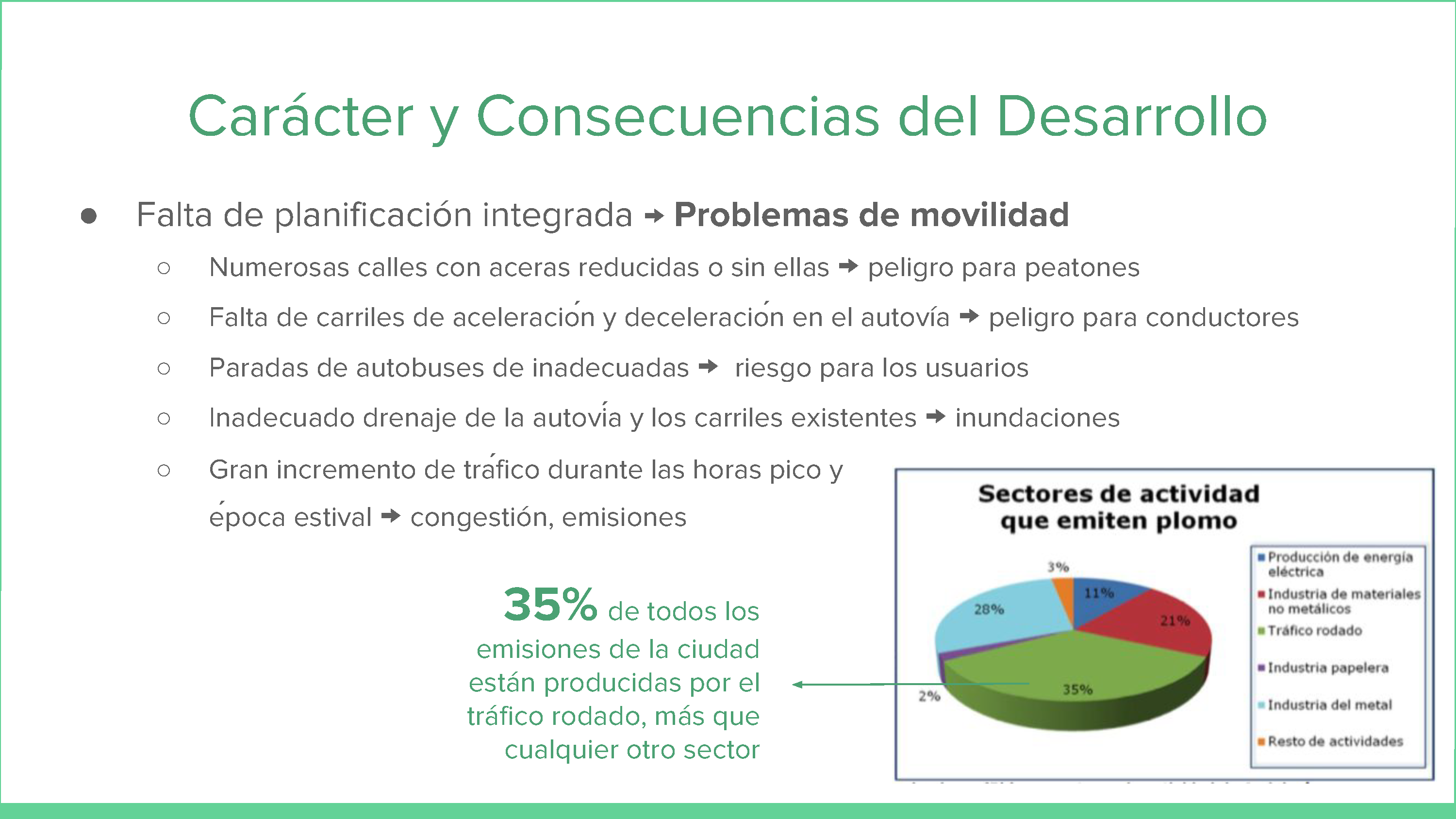
Character and Consequences of Development (cont.)
Lack of comprehensive planning during Fuengirola’s period of rapid urban expansion has lead to numerous mobility and connectivity issues. These issues, such as streets lacking sidewalks, poor highway drainage, and highway lanes without sufficient room to accelerate and decelerate, have lead to accidents, flooding, and traffic congestion. Congestion is exacerbated and emissions rise during the busy tourist season.
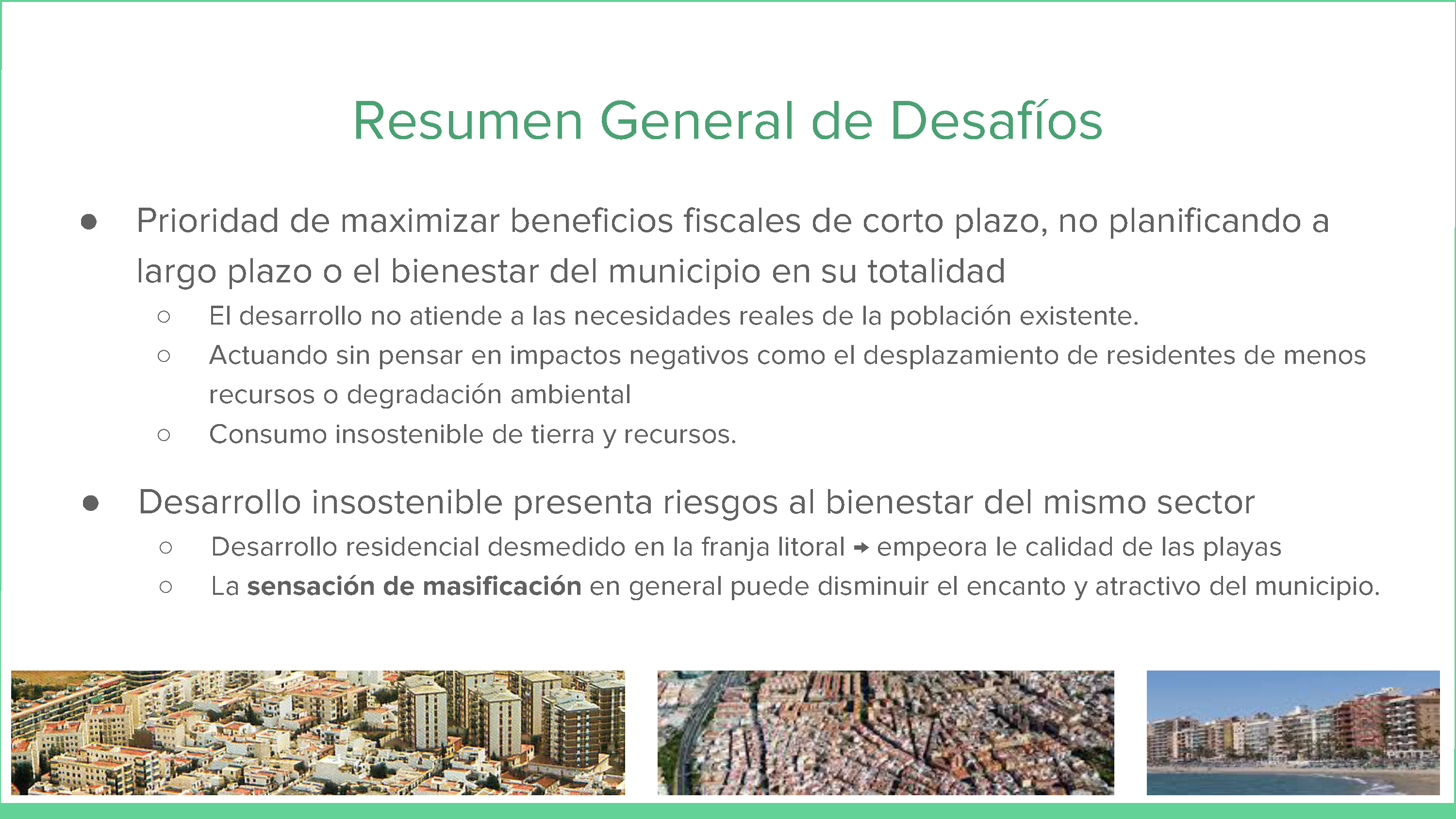
General Overview of Challenges
Development in Fuengirola has been characterized by a drive to prioritize immediate benefits over the long term well-being of the city as a whole. This has resulted in displacement of local residents and increased environmental degradation. In addition, the city’s rapid development threatens the longevity of its now most important economic sector: tourism. Dense development along the beaches and a general sense of overcrowding in the city could decrease Fuengirola’s appeal as a tourist destination.
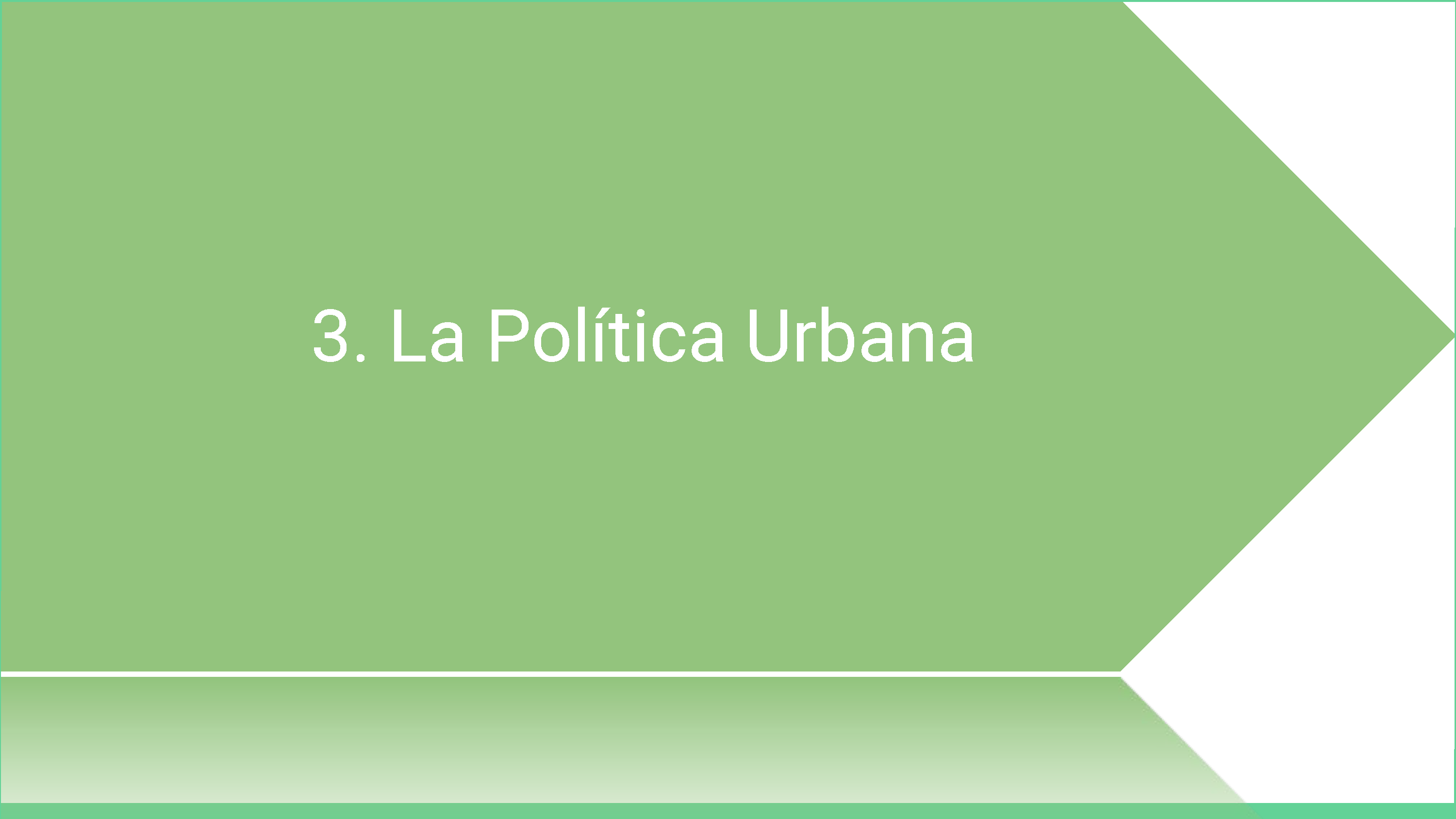
Urban Politics
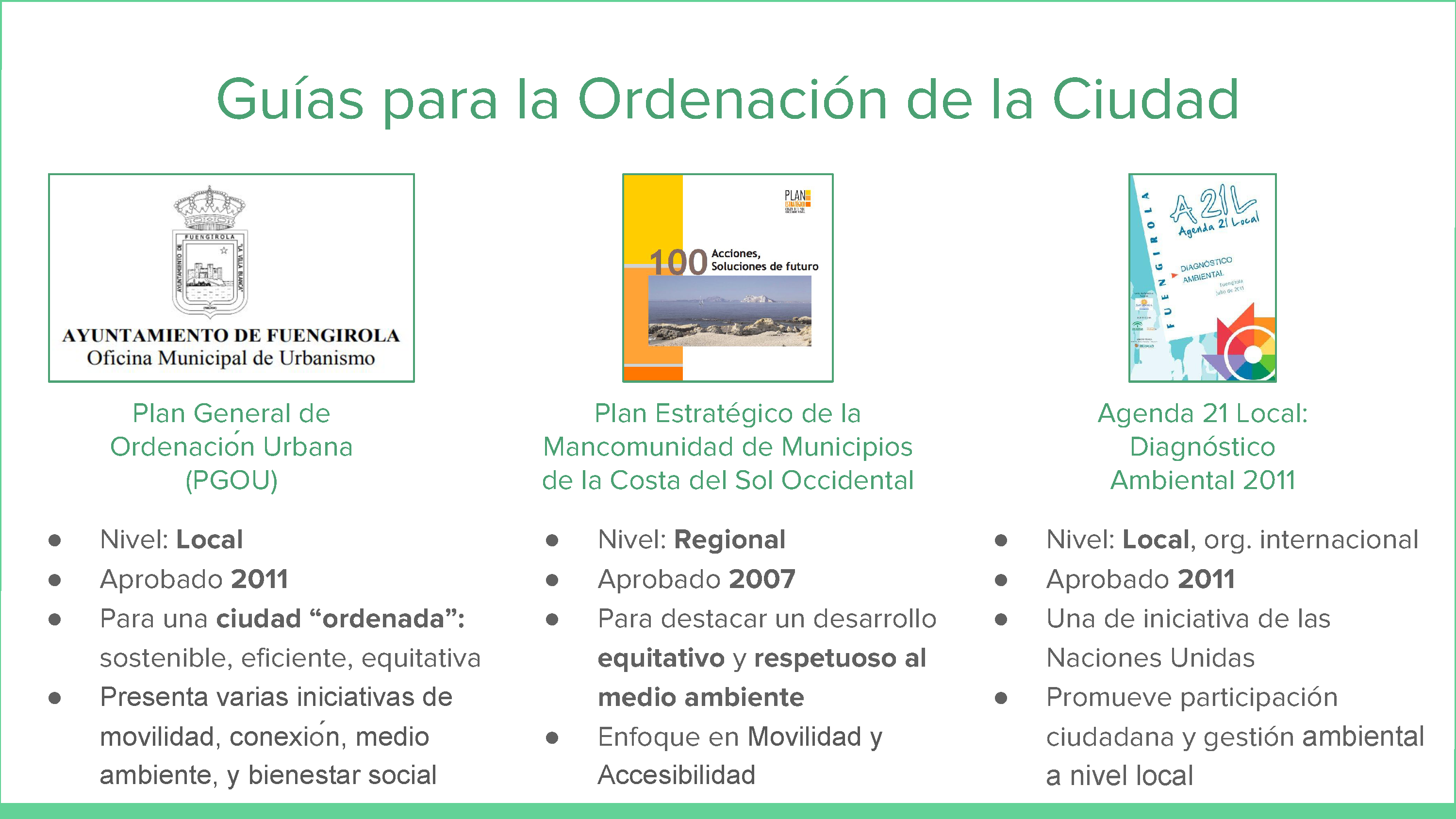
City Planning Guides
Fuengirola’s official city plan, enacted in 2011, emphasizes the city’s goals of becoming more orderly, sustainable, efficient, and equitable. The plan outlines several initiatives to improve mobility, connectivity, environmental health, and social well-being.
A regional plan enacted by cities along the Costa del Sol in 2007 similarly sets goals for equitable and environmentally sustainable regional development. This plan places special emphasis on improving mobility and physical accessibility.
Development in Fuengirola is also guided by a 2011 environmental assessment conducted as part of Agenda 21, a program of the United Nations. This plan stresses citizen participation and environmental management at the local level.
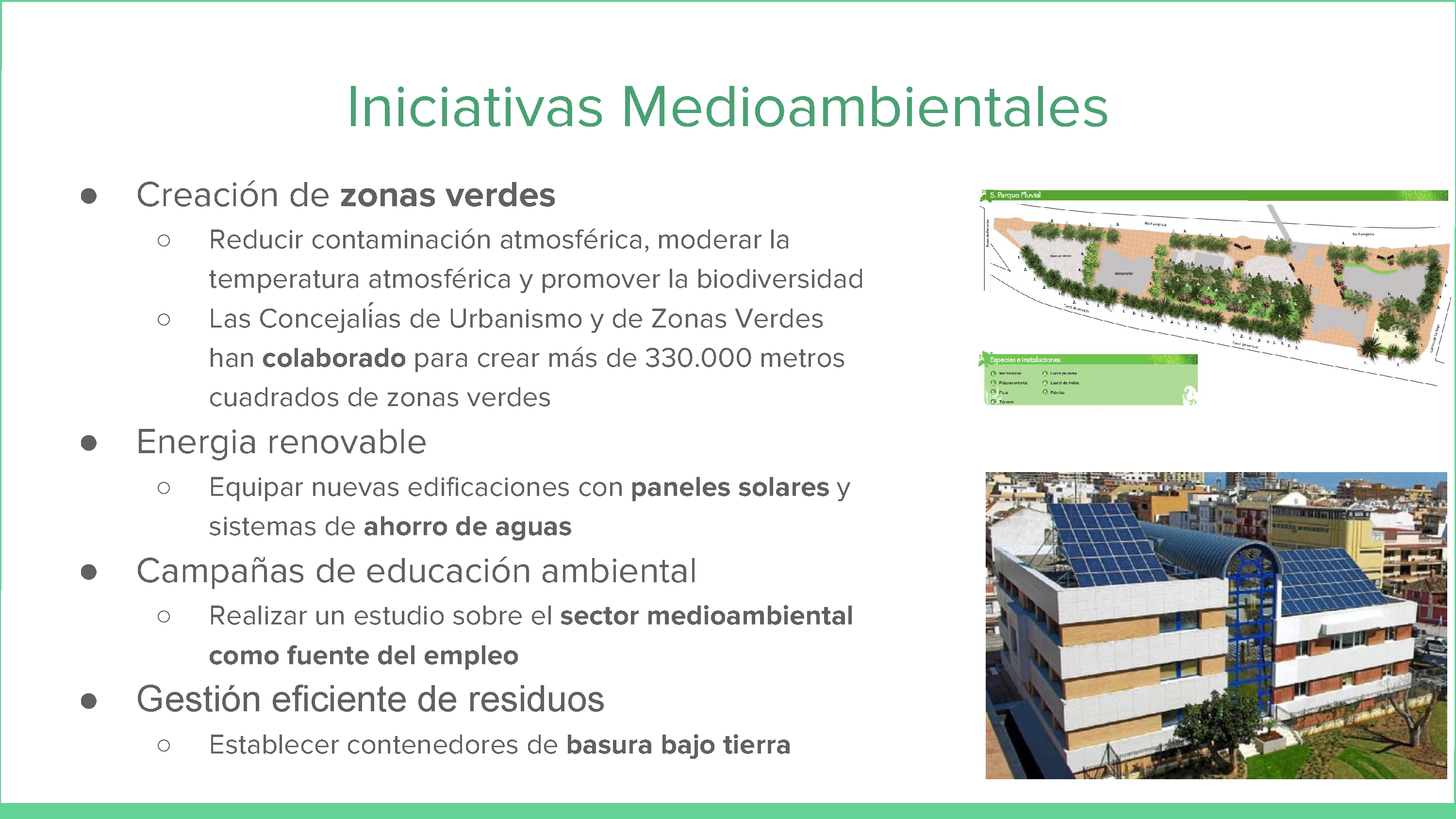
Environmental Initiatives
The city has begun, or will soon begin, several environmental initiatives including the creation of “green zones,” increased renewable energy standards, environmental education campaigns, and more sustainable waste management practices. As of May 2018, 330,000 square meters of green zones had been established through a joint effort of the city councils for Urbanism and Green Zones.
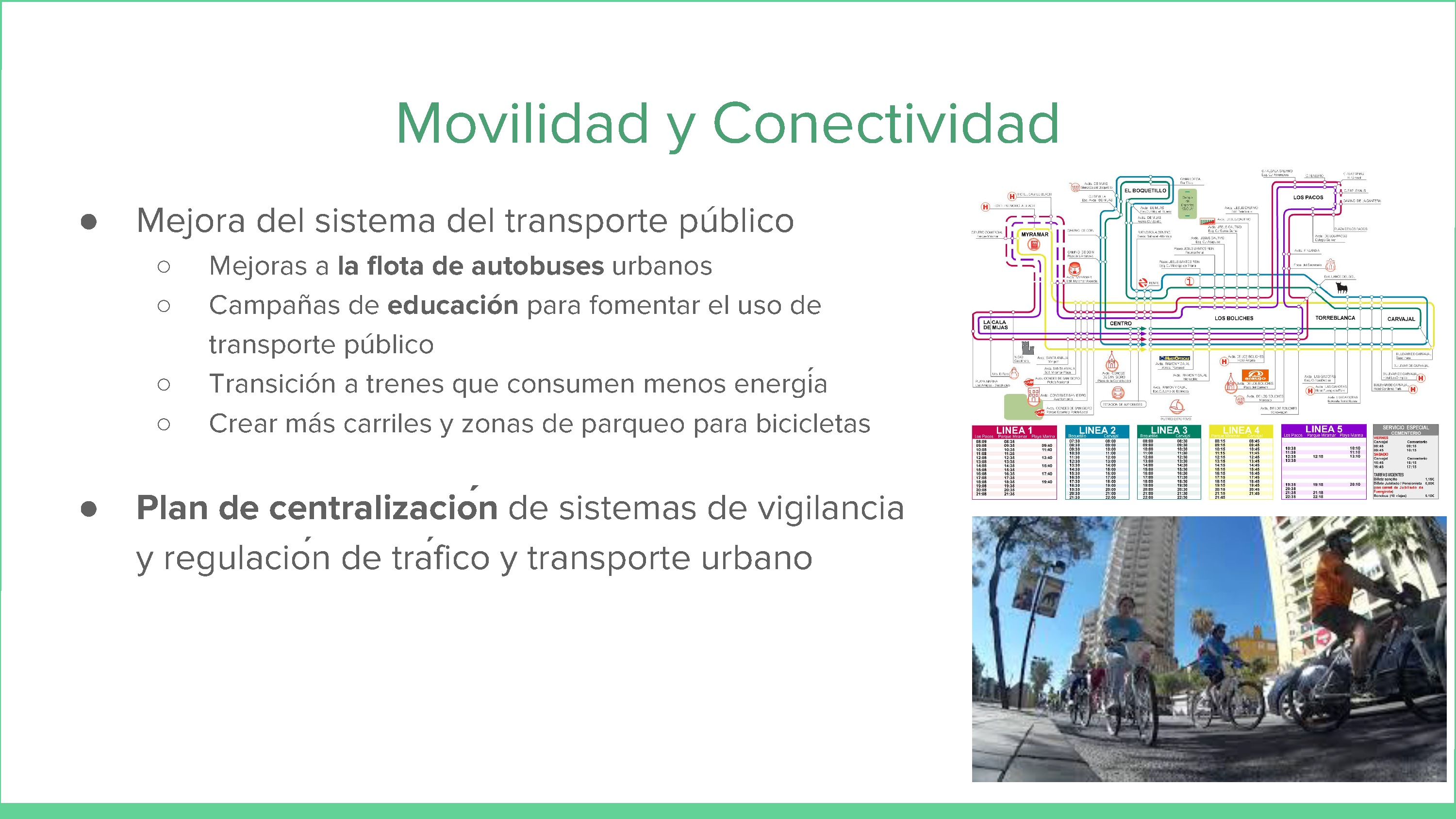
Mobility and Connectivity
Efforts are also underway to improve the city’s public transit system. This includes expanding the fleet of city buses, switching to more energy efficient trains, and creating more bicycle lanes and infrastructure. A plan to centralize traffic and transportation in the city is expected to reduce traffic congestion and accidents.

Best Practices
Everything proposed in Fuengirola’s official city plan can be achieved within the existing municipal budget. Ensuring that social and environmental health initiatives are pursued in an economically sustainable way is key to fostering long-term stability and prosperity.
Fuengirola has earned acclaim for the transparency of its government. Upholding these norms of government accessibility and openness will help solicit citizen engagement and investment in local sustainability initiatives.